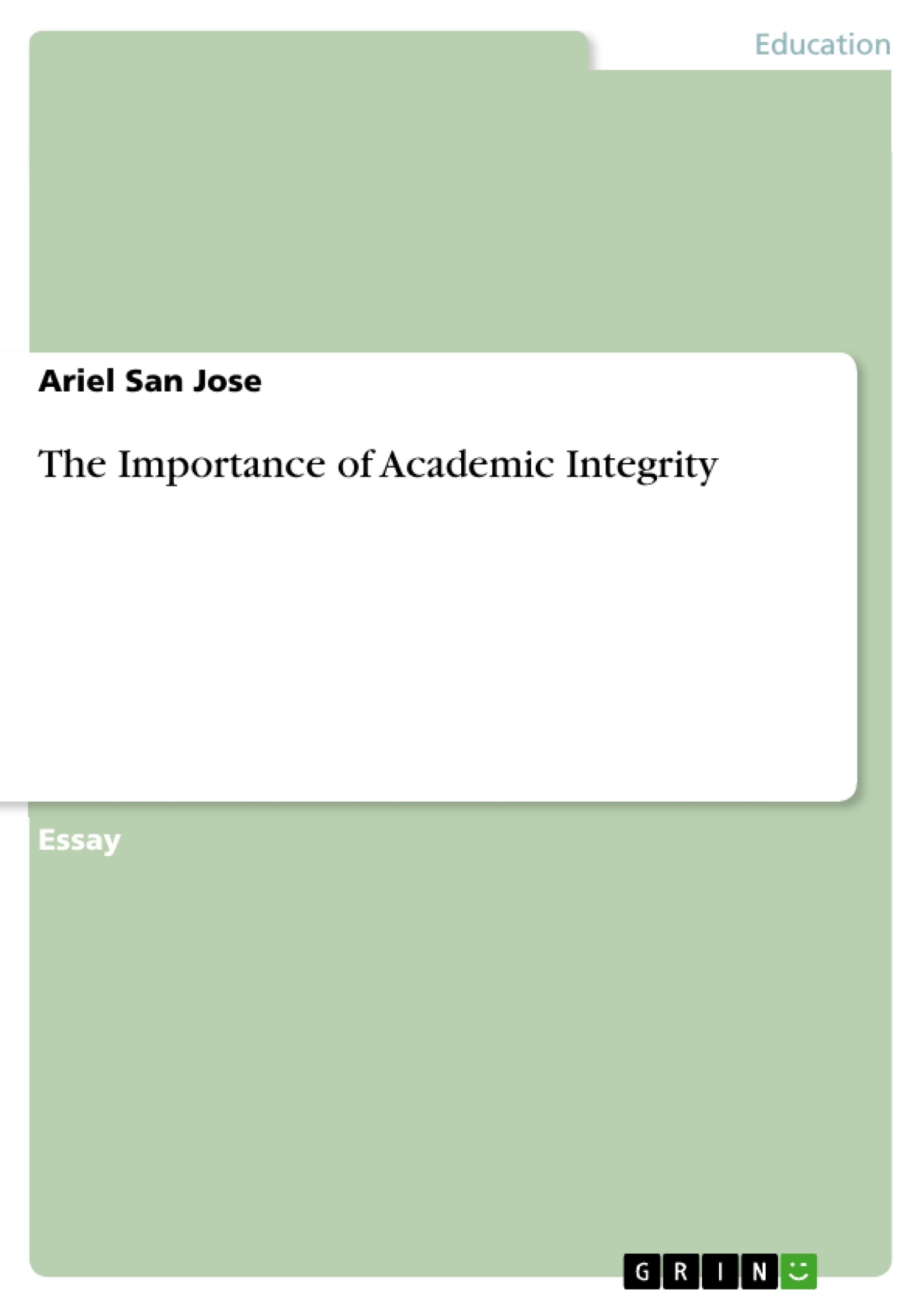Academic integrity and intellectual credibility of students’ outputs are challenged in the onset of COVID 19. However, educational institutions’ respond to the challenge remain uncertain because confronting this issue affects not only the students but also the teachers. Should academic institutions need to address the issue of academic integrity and intellectual credibility? This essay presents the problem and offer several ways to avoid academic dishonesty.
Table of Contents
- Introduction
- Academic Dishonesty: An Overview
- Reasons for Academic Dishonesty
- Strategies for Minimizing Academic Dishonesty
- Personal Experience
- Ways to Avoid Academic Dishonesty
- Types of Plagiarism
- Conclusion
Objectives and Key Themes
This work aims to provide a comprehensive overview of academic dishonesty in higher education, exploring the reasons behind it and outlining strategies to mitigate this issue. The discussion is grounded in current research and the author's personal experiences.
- Prevalence and impact of academic dishonesty
- Underlying factors contributing to academic dishonesty
- Strategies for fostering academic integrity
- The role of technology in addressing academic dishonesty
- Challenges and considerations in maintaining academic integrity in the digital age
Chapter Summaries
- Introduction: This chapter sets the stage by discussing the increasing prevalence of academic dishonesty, particularly during the COVID-19 pandemic. The importance of academic integrity in a healthy learning environment is emphasized.
- Academic Dishonesty: An Overview: This chapter provides a definition of academic dishonesty and explores the global scope of this issue through research findings. Statistics from various universities highlight the significant percentage of students engaging in dishonest practices, emphasizing the urgency of addressing this problem.
- Reasons for Academic Dishonesty: This chapter delves into the common reasons why students engage in academic dishonesty, exploring factors like poor time management, academic stress, peer pressure, and fear of failure. The chapter examines the psychology behind these motivations and how they contribute to dishonest behavior.
- Strategies for Minimizing Academic Dishonesty: This chapter explores various strategies implemented by academic institutions to prevent academic dishonesty. These include the use of fines and supervision, promoting awareness of ethical principles, implementing honor codes, and providing training on research skills. The chapter also acknowledges the limitations and potential challenges associated with these strategies.
- Personal Experience: The author shares their own experiences with academic dishonesty, highlighting the pressures and temptations that can lead to unethical choices. This personal reflection offers a nuanced perspective on the complex dynamics involved in maintaining academic integrity.
- Ways to Avoid Academic Dishonesty: This chapter outlines a range of practical solutions to address academic dishonesty. Key recommendations include raising awareness about academic integrity from an early age, utilizing technology to detect plagiarism, implementing remote invigilation software, taking legal action against contract cheating services, and re-evaluating teaching and assessment methods.
- Types of Plagiarism: This chapter explores the different types of plagiarism, including direct plagiarism, self-plagiarism, mosaic plagiarism, and accidental plagiarism. The chapter provides clear definitions and examples of each type, emphasizing the importance of understanding and avoiding all forms of plagiarism.
Keywords
This work focuses on academic integrity, academic dishonesty, plagiarism, contract cheating, online assessment, higher education, student motivation, learning environment, ethical principles, prevention strategies, technology-based solutions, and pedagogical approaches.
- Quote paper
- Ariel San Jose (Author), 2021, The Importance of Academic Integrity, Munich, GRIN Verlag, https://www.grin.com/document/1021285



